Categories:
The AK47 barrel is a crucial component in one of the most iconic and widely recognized guns in the world, the Avtomat Kalashnikova 1947, commonly known as the AK47. This gun, invented by Mikhail Kalashnikov, has garnered a reputation for its durability, reliability, and effectiveness in a wide range of conditions, from the heat of deserts to the cold of arctic environments.
Central to the AK47’s performance is its barrel, the metal tube through which bullets are fired. The barrel plays a fundamental role in determining the rifle’s accuracy, range, and overall effectiveness in various combat situations. Crafted from high-strength steel, the AK47 barrel is designed to withstand intense pressures and temperatures generated when firing a round. This durability is one of the hallmark features of the AK47, making it a reliable weapon even under the most rigorous conditions.
The internal surface of the barrel is rifled, meaning it has a series of spiral grooves that impart a stabilizing spin to the bullet as it is propelled forward. This spin is essential for maintaining the bullet’s trajectory and accuracy over longer distances. The rifling within the barrel of the AK47 is typically designed with four lands and grooves, with a right-hand twist, which helps to stabilize the 7.62x39mm caliber bullets commonly used with the weapon.
The length and thickness of the barrel are also significant factors in its design and functionality. The standard AK47 barrel length is approximately 415mm (16.3 inches), which strikes a balance between portability and accuracy. A longer barrel generally enhances accuracy and muzzle velocity, while a shorter barrel offers better maneuverability in tight spaces. The AK47 barrel is also chrome-lined, a feature that provides resistance to corrosion and extended barrel life, particularly valuable in harsh environments where the rifle may be exposed to moisture and dirt.
The simplicity and robustness of the AK47 barrel contribute significantly to the weapon’s legendary status. Its straightforward design ensures ease of maintenance and repair, a critical factor in the field where sophisticated tools and resources may not be readily available.
The manufacturing of an AK-47 barrel involves specific materials that ensure durability, reliability, and performance. Typically, the barrel of an AK-47 is constructed from high-strength steel, which is chosen for its ability to withstand high pressures and temperatures generated during the firing process. The ideal steel used is usually chrome-molybdenum alloy or chromium-vanadium steel. Chrome-molybdenum steel, often abbreviated as chromoly, is a blend of chromium, molybdenum, and steel, which combines the flexibility of molybdenum with the hardness and anti-corrosion properties of chromium, making it highly resistant to wear and tear and oxidation.
Chromium-vanadium steel integrates vanadium and chromium into steel, enhancing its tensile strength and resistance to fatigue.
A critical process in the production of AK-47 barrels is chrome lining. This involves applying a thin layer of chromium to the internal surface of the barrel. Chrome lining serves multiple purposes: it significantly increases corrosion resistance, extending the barrel’s lifespan even under adverse conditions; it simplifies maintenance by making cleaning easier; and it reduces wear caused by the bullet and hot gases passing through the barrel.
However, chrome lining can slightly reduce the barrel’s accuracy due to the challenges in applying a perfectly even chrome layer.
Another technological advancement in AK-47 barrel manufacturing is cold hammer forging. This process involves a mandrel being forced through the barrel blank to shape the bore and rifling without the application of heat. Cold hammer forging refines the grain structure of the steel, resulting in a very strong, durable, and precise barrel. This technique is often preferred for military-grade guns because it produces barrels that can endure extensive use and harsh conditions.
Ultimately, the materials used in the production of an AK-47 barrel, combined with advanced manufacturing techniques like chrome lining and cold hammer forging, ensure that the finished product delivers the robustness and operational efficacy that the AK-47 is renowned for worldwide.
Barrel rifling is a crucial feature in the design and function of the AK-47 barrel, significantly contributing to the gun’s accuracy and effectiveness. Rifling refers to the helical grooves that are machined into the inner surface of the gun barrel. These grooves are designed to impart a spin to the bullet as it travels down the barrel and exits the muzzle.
The spinning motion stabilizes the bullet, promoting a straighter trajectory and improving accuracy over various distances. The mechanics behind rifling involve precisely cut grooves, typically arranged in a twisted pattern. When the trigger is pulled, and the firing pin strikes the primer, the resulting explosion propels the bullet forward. As the bullet engages the rifling grooves, it is forced to spin along its longitudinal axis.
The gyroscopic effect produced by this spin counters the forces that might otherwise cause the bullet to wobble or tumble through the air. Consequently, the bullet remains on a more stable flight path, ensuring that it hits closer to the intended target. The importance of barrel rifling in an AK-47 cannot be overstated. The consistent and rapid firing rate of this assault rifle requires a high degree of accuracy to maintain effectiveness in combat situations.
Rifling helps maintain that accuracy, even when the rifle is subjected to the rigors of sustained use. Moreover, the design of the AK-47 is such that it can endure harsh environmental conditions while still delivering reliable performance. The rifled barrel plays a key role in this by ensuring that each bullet fired follows a predictable and precise path. Rifling also affects the compatibility of ammunition.
The AK-47 typically fires 7.62x39mm cartridges, which are optimized for the rifling pattern designed into the barrel. Different rifling patterns, measured in terms of twists per inch, can influence bullet behavior and are chosen based on the ballistic characteristics desired for the weapon’s intended use. Thus, rifling is not merely an add-on feature but an integral component that works in harmony with the bullet design and overall gun mechanics.
In summary, rifling enhances the performance of the AK-47 by stabilizing the bullets’ flight, thereby increasing accuracy and effectiveness.
The AK47, renowned for its reliability and simplicity, is a robust weapon adopted by military forces and militia groups worldwide. One of the key components that influences its performance is the barrel, the metal tube through which bullets are propelled. Although the original AK47 design features a standard barrel length, variations exist across different models and iterations, each tailored to specific needs and operational contexts.
The standard AK47 barrel length is typically around 415 millimeters (approximately 16.3 inches). This length strikes a balance between portability and ballistic performance, providing sufficient velocity and accuracy for a range of combat scenarios. However, as the AK47 platform has evolved, various barrel lengths have been introduced to optimize the gun for different uses.
Shorter barrel versions, such as those found in the AKS-74U and the more modern AK-105, feature barrels around 206 millimeters (8.1 inches) and 314 millimeters (12.4 inches) respectively. These compact variants are often favored in close-quarters combat and urban warfare due to their improved maneuverability and reduced weight. The shortened barrel does result in reduced muzzle velocity and effective range, but for operations requiring quick, close-in engagements, the trade-off is often deemed acceptable.
Conversely, longer barrel variants are also in existence. The RPK, a squad automatic weapon based on the AK47, features a longer barrel measuring approximately 590 millimeters (23.2 inches). This extended length enhances the weapon’s accuracy and effective range, making it more suitable for suppression and sustained fire roles. With increased muzzle velocity, these longer barrels allow the projectile to maintain a flatter trajectory, thus improving hit probability at extended distances.
Barrel length variations are not just about modifying the weapon’s physical dimensions; they also serve to adapt the AK47 to diverse combat roles. Longer barrels tend to improve precision and range, making them ideal for marksmen and support roles, while shorter barrels find their niche in rapid, high-mobility environments. Each length configuration embodies design trade-offs that prioritize specific performance attributes, reflecting the versatile nature of the AK47’s enduring legacy.
Maintaining the barrel of an AK-47 is essential for ensuring its longevity and consistent performance. The barrel, being the conduit through which bullets are fired, is subjected to extreme pressures and high-temperature gases during each discharge. Regular maintenance begins with routine cleaning, primarily to remove carbon fouling and any residue that accumulates after firing. Using a bore brush and cleaning solvent helps break down these residues, which can otherwise corrode the metal if left untreated.
Following the solvent, a series of cleaning patches should be used until they come out clean, indicating that the barrel is free of contaminants.
Ensuring that no moisture is left in the barrel is crucial, as it can cause rusting and pitting of the metal. After cleaning, a light coating of gun oil can be applied to the interior surface to provide a protective layer against corrosion. Proper lubrication not only prevents rust but also reduces friction between the bullet and the barrel’s inner surface, potentially extending the lifespan of the barrel.
It’s important to note that the frequency of cleaning should correlate with the amount of use the gun sees. For a heavily used AK-47, cleaning after each use is advisable. For less frequent use, a monthly inspection and cleaning might suffice. In addition to regular cleaning, periodic inspections are necessary to check for any signs of wear, such as erosion of the rifling or any visible damage.
Addressing these issues early can prevent more severe damage and costly repairs.
Barrel longevity also hinges on the type of ammunition used. High-quality, non-corrosive ammunition is less likely to leave harmful residues, unlike cheaper, corrosive types that can accelerate wear if not promptly cleaned away. Temperature extremes and improper storage conditions also negatively affect the barrel’s service life. Keeping the gun stored in a dry, temperate environment will help maintain its integrity over time.
In summary, diligent and regular maintenance of the AK-47 barrel through thorough cleaning, proper lubrication, and careful storage are key practices that contribute significantly to its durability and reliable function.
The design of an AK-47 barrel significantly impacts its performance, influencing factors such as accuracy, durability, and heat dissipation. One of the primary considerations in barrel design is the material used. Traditional AK-47 barrels are typically made from steel, providing the necessary strength to withstand the high pressures generated during firing. Different steel alloys can offer varied balances of toughness and wear resistance, which ultimately affect the barrel’s longevity and its ability to maintain accuracy over time.
Another crucial aspect is the barrel’s rifling. The internal spiral grooves, known as rifling, are paramount in stabilizing the bullet as it exits the barrel. The specific twist rate of the rifling—how quickly the grooves spiral down the barrel—plays a key role in determining the bullet’s rotational speed. An optimally chosen twist rate can significantly enhance the precision of fired shots, accommodating various bullet weights and types.
Conversely, an improper twist rate can lead to reduced accuracy and unpredictable trajectories. The length of the barrel also has a pronounced effect on the ballistics performance. A longer barrel typically allows for more complete combustion of the gunpowder, leading to higher bullet velocities and improved accuracy at longer distances. However, increased barrel length also adds weight and can impede maneuverability, which is a critical factor in the AK-47’s design for robust field use.
Barrel profile—the thickness and contour of the barrel—further influences performance. Heavier, thicker barrels can better manage sustained periods of rapid fire by absorbing and dissipating heat more effectively, thus reducing the risk of overheating and barrel warping. However, this comes at the cost of added weight, which may not be desirable for infantry in mobile or fast-paced combat situations. Another important design element is the barrel’s chamber and throat.
Precise machining in these areas ensures proper seating of the cartridge and smooth passage of the bullet into the rifling, which are essential for maintaining consistency and preventing malfunctions. Enhanced chamber designs can provide better sealing and gas management, contributing to the overall efficiency of the firing cycle. In summary, the metal tube through which bullets are fired, the barrel, is a pivotal component in the AK-47’s performance.
The AK47 has long been renowned for its durability and reliability, and its barrel is a significant component contributing to these characteristics. Over time, innovations in AK47 barrel design and manufacturing have emerged, aiming to enhance performance, longevity, and customization possibilities. One of the primary areas of innovation lies in the materials used in barrel construction. Originally, barrels were primarily made from chrome-lined steel to resist corrosion and wear from firing.
However, advancements in metallurgy have led to the development of new steel alloys that offer superior strength and resilience. These modern alloys not only improve the barrel’s lifespan but also enhance accuracy by maintaining better structural integrity under sustained fire.
Another notable innovation is the adoption of different manufacturing techniques such as cold hammer forging (CHF). CHF creates a dense and uniform grain structure in the metal, leading to better performance and longevity when compared to traditional methods. This technique has been increasingly favored by manufacturers aiming to produce barrels that can withstand the rigorous conditions and high rates of fire associated with the AK47.
The shift toward customizability has also influenced AK47 barrel designs. The rise of the aftermarket industry has spurred the development of barrels that cater to specific user needs, whether it be for enhanced accuracy, reduced weight, or better heat dissipation. Fluted barrels, for example, have become popular for their ability to shed weight and improve cooling, thereby maintaining performance during extended firing sessions.
Looking to the future, advancements in composite materials and nanotechnology hold promise for further innovation in AK47 barrels. Researchers are exploring the potential of incorporating graphene and other advanced composites to create barrels that are not only lighter but also stronger and more heat resistant. Such materials could revolutionize the design, making the iconic rifle even more effective in diverse environments.
Additionally, smart technology integration may also be on the horizon. Embedded sensors that monitor barrel temperature, wear, and performance in real-time could provide invaluable feedback to users, allowing for timely maintenance and optimization of firing practices. These innovations signify a blending of traditional mechanical engineering with cutting-edge technology, ensuring that the AK47 remains a formidable and adaptable weapon for generations to come.
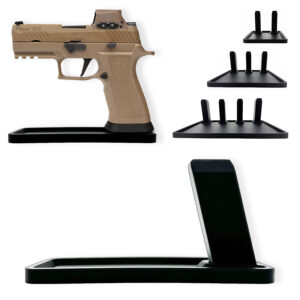
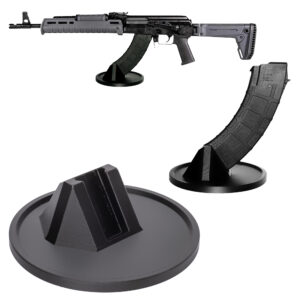

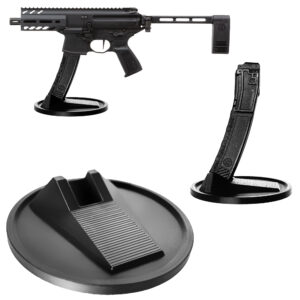
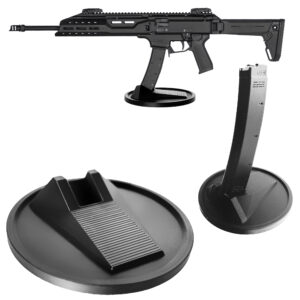


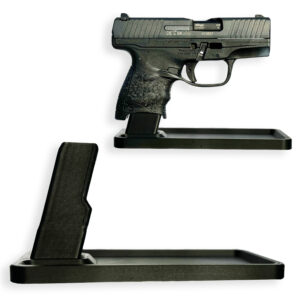
Colt
Colt M4 Carbine
Colt LE6920
Colt AR-15 A4
Daniel Defense
DDM4 V7
DDM4 V9
DDM4 V11
DDM4 ISR (Integrally Suppressed Rifle)
Smith & Wesson (S&W)
M&P15 Sport II
M&P15 Tactical
M&P15T
Bravo Company Manufacturing (BCM)
BCM Recce-16
BCM Recce-14
BCM MCMR Series
Aero Precision
M4E1 Series
AC-15
AR15 Pistol (Various Configurations)
Ruger
Ruger AR-556
Ruger SR-556
Ruger AR-556 MPR (Multi-Purpose Rifle)
Springfield Armory
Saint Victor
Saint Edge
Saint AR-15
PSA (Palmetto State Armory)
PSA PA-15
PSA AR-V
PSA Jakl (AR Pistol)
FN America
FN 15 Tactical Carbine
FN 15 Patrol
FN 15 DMR
Wilson Combat
Recon Tactical
Super Sniper
Protector Carbine
SIG Sauer
SIG M400 Tread
SIG M400 Elite
SIG M400 SDI
LWRC International
IC DI (Direct Impingement)
IC SPR
IC A5
Bushmaster Guns
XM-15 QRC
Bushmaster MOE
XM-15 Patrolman
Rock River Arms
LAR-15 Entry Tactical
LAR-15 Predator
LAR-15 Elite Comp
Stag Arms
Stag 15 Tactical
Stag 15L (Left-Handed Models)
Stag 15 Valkyrie
Noveske Rifleworks
Noveske Gen 4 N4
Noveske Space Invader (AR Pistol)
Noveske Recon
Anderson Manufacturing
AM-15 Optic Ready
AM-15 M4 Carbine
AM-15 Precision Rifle
Adams Arms
AA-15 Piston Rifle
P2 AARS (Adams Arms Rifle Series)
Black Rain Ordnance
SPEC15 Series
BRO Predator
Fallout 15
Diamondback Guns
DB15 Series
DB15CCMLB
DB15EB
Del-Ton Inc.
DTI-15
Del-Ton Echo 316H
Sierra 316M
Windham Weaponry
Windham SRC
Windham VEX-SS
Windham RMCS-4 (Caliber Conversion System)
Christensen Arms
CA-15 G2
CA-15 Recon
CA-15 Titanium Edition
Patriot Ordnance Factory (POF-USA)
Renegade Plus
P415 Edge
Revolution DI
LaRue Tactical
PredatAR
OBR (Optimized Battle Rifle)
LaRue Stealth 2.0
Battle Arms Development
Workhorse Patrol Carbine
BAD556-LW (Lightweight)
Authority Elite Rifle
Faxon Guns
Ascent AR-15
FX-19 (AR Pistol)
Streamline Ultralight Series
KE Arms
KE-15 SLT (Super Lightweight Tactical)
KE-15 Scout Carbine
Primary Weapons Systems (PWS)
MK1 MOD 2-M
MK116 PRO
MK107 (Piston AR Pistol)
ZEV Technologies
ZEV Core Elite Rifle
ZEV AR15 Billet Rifles
Franklin Armory
BFSIII AR-C1
Militia Model
F17-L (Chambered in .17 WSM)
Seekins Precision
SP15 DMR
NX15 Skeletonized Rifle
Havak Bravo
Aero Precision (Additional Models)
EPC-9 (Pistol Caliber ARs)
VG6 AR Rifles
Barrett Guns
REC7 DI
REC7 Gen II
CMMG
MK4 RCE
Resolute 300
Banshee (AR Pistol)
DPMS Panther Arms
Panther Oracle
Panther LR-308
H&K (Heckler & Koch)
HK MR556A1
HK416 (Military Variant)
Rock Island Armory (Armscor)
VR-80 Tactical AR (Shotgun AR Platform)
Troy Industries
Troy SPC-A3
Troy PAR (Pump Action AR)
Wilson Tactical
Tactical Recon AR
Protector Series
F1 Guns
FDR-15 Skeletonized Rifle
BDRx-15 Series
Juggernaut Tactical
JT-15
JT-10 Precision Rifle
AeroSurplus
Surplus AR-15 Rifles (Budget Models)
Thunder Tactical
AR-15 Basic Carbine
Tactical Builder Sets
Radical Guns
RF-15
Forged AR-Series
Dark Storm Industries
DS-15 Featureless Rifles
DS-10 Typhoon
DRD Tactical
Paratus
Aptus AR Rifles
Bear Creek Arsenal
BCA-15
AR Complete Upper Builds
Aero Survival Rifles (ASI)
ASR Tactical Series
Tactical Edge
WARFIGHTER Series
AR-15 Lightweight Rifles
Lone Star Armory
TX15 DMR
TX15 Carbine
HERA Arms
HERA H7
HERA AR-15 Lower Builds
IWI (Israeli Weapon Industries)
Zion-15
DRD Tactical
Tactical Modular Rifles
Quick-Takedown Rifles
V Seven Weapons
1776 Rifle
Hyperlite Rifle
Core Rifle Systems
Core15 Tac III
Core15 Patrol Rifle
Armalite (Original AR-15 Creator)
M15 Tactical
M15 A4 Carbine
DEF15 (Defensive Sporting Rifle Series)
PSA (Palmetto State Armory Additional Models)
PSAK-47 Hybrid (AR-AK Style Hybrid)
PSA Dagger (Pistol Caliber Configurations)
Odin Works
OTR-15
Odin Recon Rifle
Maxim Defense
MDX-508 PDX (Compact AR Pistol)
MDX-510 Rifle